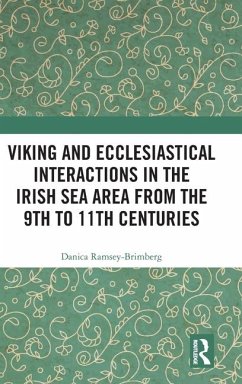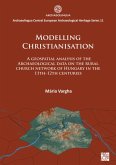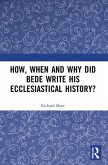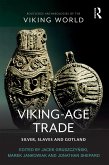Different approaches have been conducted to analyse the interactions of the different belief systems in the early medieval world. This book assesses the relationship between clerics and Scandinavian-influenced laity in the Irish Sea area through the placement of furnished graves at or near ecclesiastical sites in the ninth through the eleventh centuries. Other areas of funerary studies have moved beyond a dichotomy of Christianity and paganism, acknowledging that practices can be multifaceted. Yet, statements regarding Viking Age furnished graves in or near ecclesiastical sites are still not as pervasively open to this line of thinking.
To bridge this gap, this book delves into the historiography and context of the burial practices through multidisciplinary analysis. The ecclesiastical sites and furnished graves of the eastern (southwest Scotland and northwest England), central (Isle of Man), and western (Ireland and Northern Ireland) Irish Sea areas are then examined using various sources to understand their contexts and relationships. In the final chapters, the sites and graves are brought together to identify any trends, any unique circumstances that led to local variances, and their fit into the larger picture. Viking Age furnished graves can be seen as an acceptable variation among an array of burial practices, and the relationship between the clergy and laity is far more complex and closely tied than has been portrayed.
Viking and Ecclesiastical Interactions in the Irish Sea Area from the 9th to 11th Centuries will appeal to students and scholars alike interested in the history of the Vikings in the British-Irish Isles and their relationships with ecclesiastical institutions.
To bridge this gap, this book delves into the historiography and context of the burial practices through multidisciplinary analysis. The ecclesiastical sites and furnished graves of the eastern (southwest Scotland and northwest England), central (Isle of Man), and western (Ireland and Northern Ireland) Irish Sea areas are then examined using various sources to understand their contexts and relationships. In the final chapters, the sites and graves are brought together to identify any trends, any unique circumstances that led to local variances, and their fit into the larger picture. Viking Age furnished graves can be seen as an acceptable variation among an array of burial practices, and the relationship between the clergy and laity is far more complex and closely tied than has been portrayed.
Viking and Ecclesiastical Interactions in the Irish Sea Area from the 9th to 11th Centuries will appeal to students and scholars alike interested in the history of the Vikings in the British-Irish Isles and their relationships with ecclesiastical institutions.








